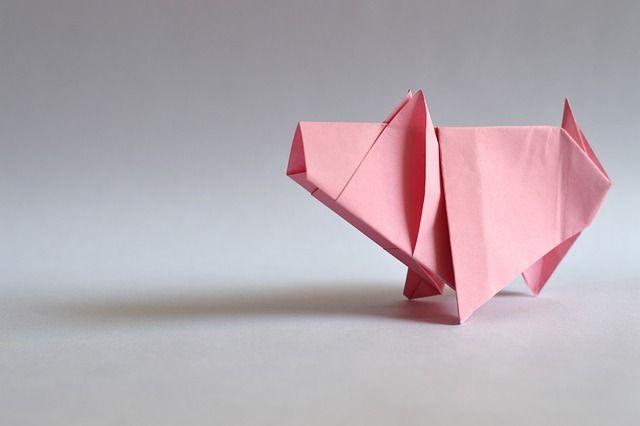Unlocking the Mystery of Chinese New Year Red Envelopes: A Guide to Etiquette
Introduction:
I. What are Chinese New Year Red Envelopes?
II. Who Receives Red Envelopes?
III. Giving Red Envelopes: Dos and Don'ts
1. Choosing Appropriate Amounts:
2. Using Crisp, New Bills:
3. Presenting with Both Hands:
1. Giving Odd Number Amounts:
2. Opening Red Envelopes Immediately:
IV. Cultural Considerations and Additional Tips
Conclusion:

Introduction:
Chinese New Year, also known as the Spring Festival, is one of the most important and widely celebrated festivals in Chinese culture. It marks the beginning of the lunar calendar year and is a time for family reunions, feasts, and festivities. Central to this auspicious occasion is the tradition of giving and receiving red envelopes, also known as hongbao. In this guide, we will unravel the mystery of Chinese New Year Red Envelopes and provide you with the essential etiquette to ensure you participate in this cherished tradition with respect and understanding.
I. What are Chinese New Year Red Envelopes?
Red envelopes, or hongbao, are small packets usually made of red paper or decorated with red designs. The color red holds great significance in Chinese culture as it symbolizes good luck, happiness, and warding off evil spirits. Red envelopes are believed to bring blessings and good fortune to the recipient. They are traditionally filled with money, usually in the form of crisp, new bills.
The purpose of giving red envelopes during Chinese New Year is to share blessings, show respect, and convey good wishes for the coming year. It is a gesture of goodwill and a symbol of generosity and abundance. Red envelopes are given to express love, appreciation, and to strengthen relationships.
II. Who Receives Red Envelopes?
Red envelopes are typically given to children, unmarried individuals, and employees. Children receive red envelopes as a token of blessing and to celebrate their youth and innocence. It is a way for elders to show their love and care for the younger generation. Unmarried individuals, especially those who are not financially independent, also receive red envelopes as a form of support and encouragement.
In the workplace, employers often give red envelopes to their employees as a gesture of appreciation and to boost morale. It is a way to recognize their hard work and dedication throughout the year. Red envelopes can also be exchanged among friends and family members as a way to strengthen relationships and celebrate the new year together.
III. Giving Red Envelopes: Dos and Don'ts
To ensure that you give red envelopes in accordance with Chinese customs and traditions, here are some essential dos and don'ts to keep in mind:
A. Dos:
1. Choosing Appropriate Amounts:
When giving red envelopes, it is important to consider the relationship and age of the recipient. Close relatives, such as parents and grandparents, typically receive larger amounts, while younger children receive smaller amounts. Friends and acquaintances may receive smaller amounts as well. It is important to note that even numbers are preferred in Chinese culture, as they are believed to bring good luck, so try to give amounts in even denominations.
2. Using Crisp, New Bills:
To ensure that your red envelopes convey good luck and prosperity, it is customary to use crisp, new bills. Avoid giving old or torn bills, as they may be seen as a sign of disrespect. If you do not have access to new bills, consider visiting a bank to exchange your old bills for new ones. This attention to detail will show your respect for the tradition and the recipient.
3. Presenting with Both Hands:
When giving a red envelope, it is customary to present it with both hands. This gesture is a sign of respect and shows that you are offering your blessings along with the envelope. It is a small but meaningful gesture that adds a personal touch to the tradition.
B. Don'ts:
1. Giving Odd Number Amounts:
In Chinese culture, odd numbers are considered unlucky. Therefore, it is advisable to avoid giving red envelopes with odd-numbered amounts. Stick to even numbers to ensure that your gesture is seen as auspicious and well-intentioned.
2. Opening Red Envelopes Immediately:
When receiving a red envelope, it is considered impolite to open it immediately in front of the giver. Instead, it is customary to wait until later, preferably in private, to open the envelope. This act shows respect and appreciation for the gift-giver's gesture. It also allows the recipient to savor the anticipation and excitement of discovering the contents of the envelope.
IV. Cultural Considerations and Additional Tips
While the tradition of giving and receiving red envelopes is joyous and meaningful, it is important to be mindful of cultural considerations and additional tips to ensure that you navigate the tradition with sensitivity and respect:
- Avoid using white envelopes, as they are traditionally associated with funerals and symbolize death and mourning in Chinese culture.
- Do not discuss or compare the amounts received in red envelopes. It is considered impolite and may lead to unnecessary comparisons and discomfort among recipients.
- If you are married or have children, it is customary to give red envelopes to your parents and grandparents as a sign of respect and gratitude.
- If you are unsure about the appropriate amount to give, it is always better to err on the side of generosity. The act of giving itself is more important than the specific amount.
Conclusion:
Chinese New Year is a time of celebration, joy, and goodwill. Red envelopes play a significant role in this festive occasion, symbolizing blessings, prosperity, and good fortune. By following the etiquette guidelines outlined in this guide, you can confidently participate in the tradition of giving and receiving red envelopes while respecting Chinese culture and customs.
We hope this guide has been helpful in unlocking the mystery of Chinese New Year Red Envelopes. If you have any further questions or need more information, feel free to reach out! Happy Chinese New Year!
FREQUENTLY ASKED QUESTIONS
How much money should be put inside a red envelope?
The amount of money to put inside a red envelope can vary depending on cultural customs and traditions. In some cultures, such as Chinese and Vietnamese, red envelopes are often given during special occasions like New Year's or weddings. The amount of money is typically considered lucky and can vary from a small token amount to a more substantial sum, depending on factors like the relationship with the recipient and personal financial means. It's always best to consider the specific cultural practices and norms associated with red envelopes in your specific situation.
Are there any specific rules or etiquette when giving or receiving red envelopes?
Yes, there are specific rules and etiquette associated with giving and receiving red envelopes, especially within certain cultures such as Chinese and Vietnamese.
When giving red envelopes:
- Use new bills: It is customary to use crisp new bills in red envelopes.
- Use even numbers: The amount of money in the red envelope should be an even number, as odd numbers are associated with funeral ceremonies.
- Avoid certain amounts: The number 4 is considered unlucky in many Asian cultures, so avoid giving amounts that include the number 4.
- Give with both hands: Present the red envelope with both hands as a sign of respect and courtesy.
- Offer well wishes: Accompany the red envelope with blessings or well wishes for the recipient.
When receiving red envelopes:
- Accept with both hands: Receive the red envelope with both hands, as a gesture of politeness.
- Show gratitude: Express appreciation by thanking the giver and showing gratitude for the gift.
- Wait to open: It is common to wait until later to open the red envelope, rather than opening it immediately.
- Do not discuss amounts: Avoid discussing or comparing the amount of money received with others, as it may be considered impolite or show offish.
Remember, these rules and etiquette may vary depending on the specific cultural context, so it's always good to be mindful of the customs and traditions involved.
Can I give red envelopes to non-Chinese friends or colleagues?
Yes, you can definitely give red envelopes to non-Chinese friends or colleagues. Red envelopes, also known as "hongbao" in Chinese culture, are a symbol of good luck and blessings. They are traditionally given during special occasions such as Chinese New Year, weddings, and birthdays. However, nowadays, people of various cultural backgrounds often exchange red envelopes as a token of goodwill and celebration. It's a thoughtful gesture that can be appreciated by anyone, regardless of their cultural background.
Is it appropriate to open red envelopes in front of others?
It is generally considered appropriate to open red envelopes in private, rather than in front of others. This is because red envelopes are often given during special occasions, such as Chinese New Year or weddings, and the amount of money inside is considered a personal matter. Opening them privately allows for discretion and avoids any potential discomfort for others.


